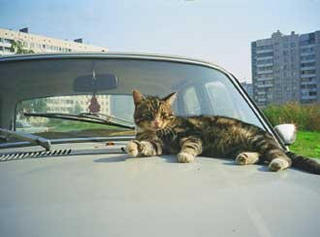The Morally Bankrupt Washington Post Pens a Love Letter to Shelter Workers Who Exterminate Cats and Dogs
 |
| A Dog Named Bear with a Shelter Employee |
In its September 26th edition, the morally bankrupt Washington Post published a story written by Karin Brulliard which can only be described as a love letter to cat and dog murderers. Specifically, Brulliard visited the Loudoun County Animal Shelter in Leesburg, Virginia, and then penned a long-winded piece in support of its workers who last year exterminated 1,360 cats and dogs; that figure represents forty-seven per cent of the total number of felines and canines that it took in.
She begins by praising the establishment of what she calls "compassion fatigue" workshops at shelters for employees who suffer from trauma and depression as a consequence of their slaughtering of defenseless animals. This is all psycho-babble and nonsense and clearly demonstrates the complete moral depravity of both the Loudoun shelter and The Washington Post.
Individuals who kill animals are committing grievous crimes but there is nothing per se mentally wrong with them. What they are suffering from are guilty consciences.
Deep down inside they know that what they are doing is morally wrong and all the made-up rationalizations of all the highly-paid, phony-baloney shrinks in this world is not going to change that. Besides, most psychiatrists are little more than third-rate philosophers with licenses to peddle drugs.
Brulliard goes on to recite the usual litany of trite rationalizations employed to justify the extermination of animals: death is not the worse thing in the world for them; they will be happier in heaven; and, they are not really cats and dogs, just inanimate objects. One can only wonder how Brulliard would react if someone were to stick a .38 to her addled gourd and, before pulling the trigger, give her a good dose of her own sophistry.
Just as is the case with humans, cats and dogs do not have any control over the circumstances into which they are born. Tragically, all too many of them are born homeless or are later abandoned to fend for themselves.
Contrary to what a lot of people in this capitalist dystopia believe, being homeless is not a crime for either animals or humans. Homeless cats and dogs have not committed any crimes and those which are exterminated in Loudoun and elsewhere certainly never received anything approaching due process of law. Despite what the murderers and megalomaniacs at both animal shelters and The Washington Post believe, they do not have the right to kill cats and dogs!
If being homeless were not bad enough, shelter cats and dogs are forced to endure the trauma of being trapped which is quickly followed up by confinement in institutions where disease, fear, and noise are the norms. On top of all of that misery there is the blatant hypocrisy of the very workers that Brulliard praises.
They work to gain these unfortunate animals' trust only so as to make them more pliable and thus easier to kill. Once they have done their dirty deeds, they indiscriminately dump their victims' corpses in landfills just as if they were part of the regular garbage which they take out each evening.
From the time of their arrivals to their departures in black trash bags, the entire shelter process is one of abuse and extermination. This is the sad fate for ten million cats and seven million dogs every year in the United States.
Finally, Brulliard lets slip that some shelter workers fear that they may very well wind up in Hell for their crimes. If only that were true! More likely, however, they are just talking through their hats.
If they really believed in an afterlife they would not be killing cats and dogs in the first place. All of them do it for the money and many of them no doubt get a kick out of abusing and killing animals.
Shelter workers are monsters who, far from deserving the public's sympathy, should be jailed. It is all the homeless cats and dogs in this world who deserve mankind's sympathy. Malheureusement, this is beyond the grasp of the twisted minds at The Washington Post.
Photo: The Washington Post.














